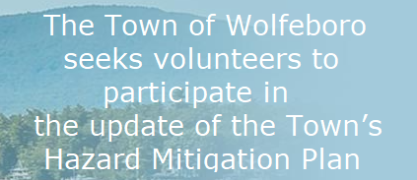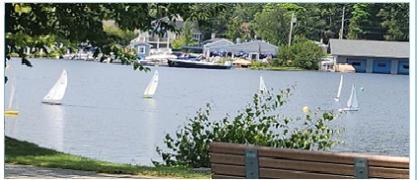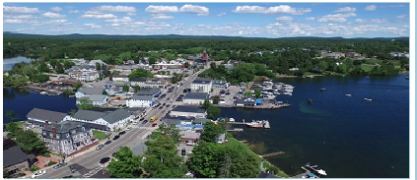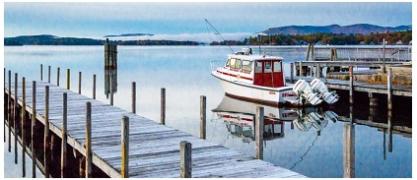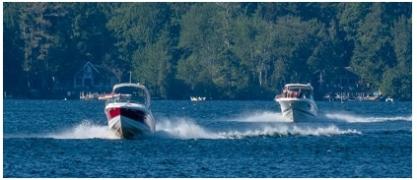NHDES Cyanobacteria Advisories
NHDES biologists conduct summer sampling visits to lakes and look for signs of cyanobacteria blooms. In addition, NHDES biologists respond to reports of suspected blooms called into their cyanobacteria hotline at (603) 419-9229. NHDES investigates the reported blooms, collects samples, and analyzes them. If cyanobacteria growth levels in a lake are above state standards, NHDES advises lake users to avoid contact with the water in areas experiencing elevated cyanobacteria cell conditions. NHDES also advises pet owners to keep their pets out of any waters that have a cyanobacteria bloom.
Advisories are not based on a toxin evaluation and are intended as a precautionary measure for short term exposure. Some cyanobacteria produce toxins that are stored within the cells andreleased upon cell death. Toxins can cause both acute and chronic health effects that range in severity. Acute health effects include irritation of skin and mucous membranes, tingling, numbness,nausea, vomiting, seizures and diarrhea. Chronic effects may include liver and central nervous system damage.
Once a cyanobacteria advisory has been issued, NHDES returns to affected waterbody weekly until the cyanobacteria standards are again met and then NHDES will lift the advisory.
In early August 2019, NHDES issued a Cyanobacteria Advisory for Mirror Lake, which had a bloom consisting of more than 1.3 million cells per milliliter of three different types of Anabaena/Dolichospermum, Woronichnia, and Microcystis. The advisory remained in effect for two weeks.
In late August 2018, the NHDES issued a Cyanobacteria Advisory for the Wolfeboro end of Winter Harbor becauseof a bloom of Gloeotrichia. The advisory remained in effect for three weeks.
In late June 2019, a small and brief bloom of Anabaena/Dolichospermum occurred by Whitegate Road in the Wolfeboro/Carry Beach end of Winter Harbor that was confirmed by a high phycocyanin measurement. Given its small size and short duration, it was not the subject of a NHDES Cyanobacteria Advisory.


